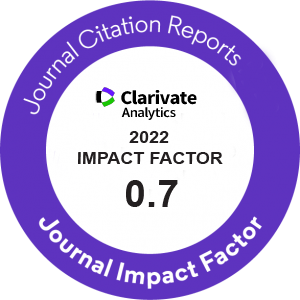| Original Article | |
| Serum Zinc: A Noninvasive Biomarker for the Prediction of Invasive Placentation | |
| Zainab Abdulameer Jafaar1, Reshed Zeki Obeid2, Dina Akeel Salman1 | |
| 1Department of Obstetrics and Gynecology, College of Medicine, Al-Mustansiriya University, Baghdad, Iraq 2Department of Obstetrics and Gynecology, College of Medicine, Al-Anbar University, Ramadi, Iraq |
|
|
IJWHR 2021; 9: 035-041 DOI: 10.15296/ijwhr.2021.07 Viewed : 2147 times Downloaded : 1803 times. Keywords : Maternal serum zinc, Placenta accrete spectrum, Placenta previa |
|
| Full Text(PDF) | Related Articles | |
| Abstract | |
Objectives: Abnormally invasive placentation (AIP) is a challenging situation capable of complicating childbirth that has recently arisen, imposing a risk on maternal lives and well-being. The optimal management of this complication requires a valid antenatal diagnostic tool other than Doppler ultrasound (US). Of these, a handful of laboratory markers have been so far used for the antenatal detection of invasive placentation. This study sought to establish whether low maternal serum zinc (Zn) is related to AIP in women with placenta previa. Materials and Methods: Over a period of six years, a prospective study was performed, including 168 pregnant ladies with placenta previa of whom, 72 cases were diagnosed with placenta accrete (PA) spectrum using Doppler US. The serum Zn was measured in all participants, and each individual was followed up regarding intraoperative and postoperative outcomes. Results: A significantly lower serum Zn level was found in women having the PA spectrum (P < 0.001). At a level of 68 μg/dL, serum Zn was 79.2% sensitive, 95.8% specific, and had a comparable accuracy (88.7% vs. 89.3%) to color Doppler US in the identification of cases with PAS spectrum among those with placenta previa. Conclusions: Low maternal serum Zn level is associated with AIP among placenta previa cases. Thus, more studies are needed in the future to support the use of this technique in the antenatal detection of the PAS. |
Cite By, Google Scholar
PubMed
Online Submission System
 IJWHR ENDNOTE ® Style
IJWHR ENDNOTE ® Style
 Tutorials
Tutorials
 Publication Charge
Women's Reproductive Health Research Center
About Journal
Publication Charge
Women's Reproductive Health Research Center
About Journal
Aras Part Medical International Press Editor-in-Chief
Arash Khaki
Mertihan Kurdoglu Deputy Editor
Zafer Akan























